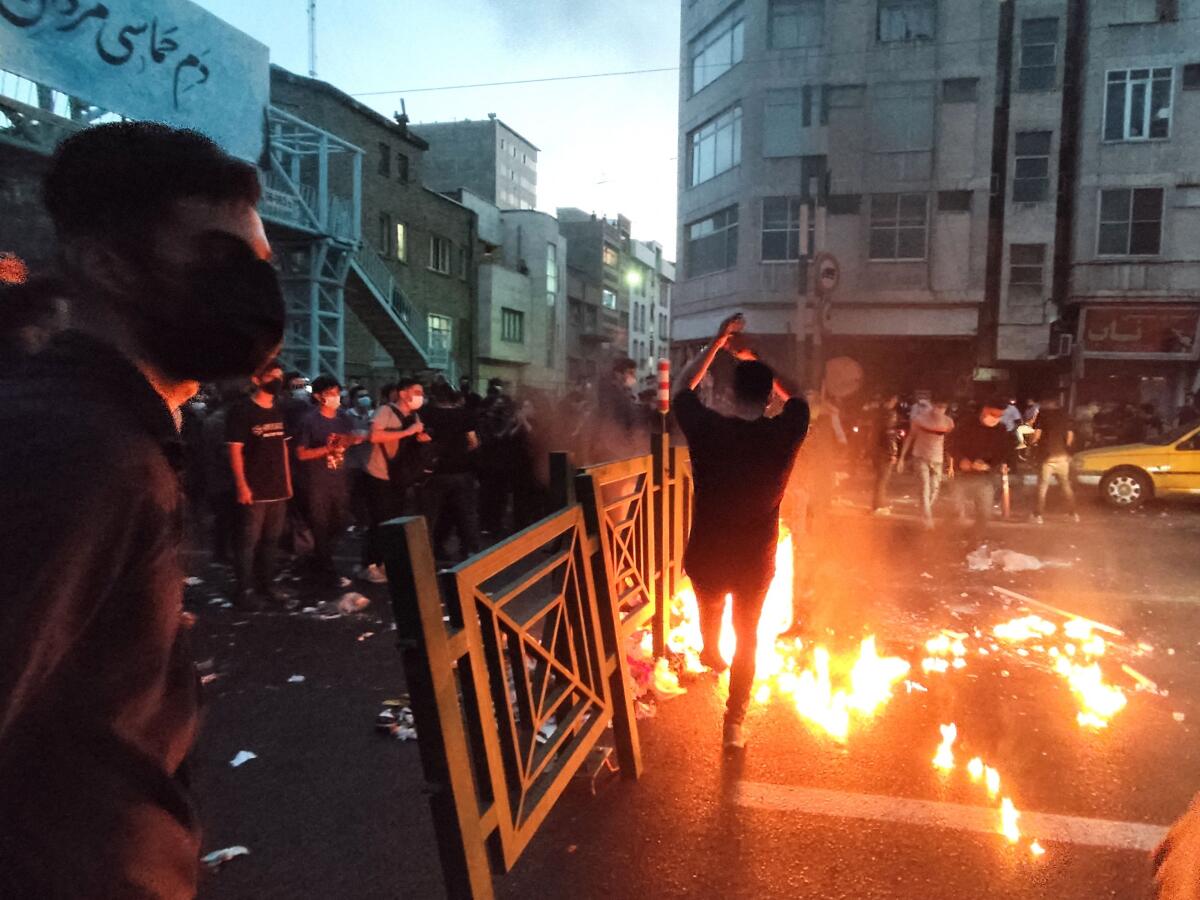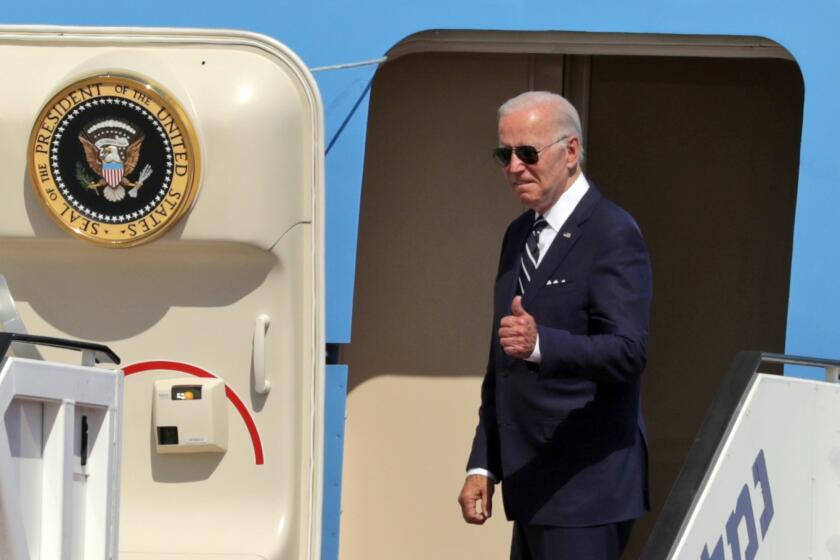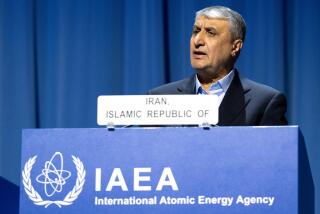What could come next for Iran after the Islamic Republic?

- Share via
The outrage sparked in September by the death of Mahsa Amini, a young woman detained by Iran’s morality police, continues to fuel protests against the Islamic Republic. As the demonstrations spread and outward resistance emboldens, we must ask two months in: What will it all lead to?
The awful truth is Iran is a country stuck, foundered in a prolonged impasse of the worst of all worlds. Unwilling to address the demands of its citizens, security forces are met on the streets by a public determined to preserve its dignity and freedom by any means necessary. Yet there is no single node, no “head” to bring it all down, repeated pleas for Iran’s Supreme Leader Ayatollah Ali Khamanei’s demise notwithstanding. There will be no Moammar Kadafi in the culvert moment as in Libya, no Saddam Hussein on the gallows as in Iraq.
Iran is run by the consensus of an entrenched, like-minded set of elites and institutions, prepared to muddle along until the next crisis — or until the state runs out either of guns or of men willing to use them. Men, whose enthusiasm for this task is variable. The key to turning the tide of violence within Iran is elite defection — the breaking of ranks within the security forces. There is little evidence that such defections are happening, at least among the upper ranks of the civilian and military leadership (whether frontline forces will continue to obey orders is another matter).
In Islam, faith is a choice. What I see on Iran’s streets today — mandatory hijab being maintained at gunpoint — could not be further from what the government claims to represent.
In fact, the speed at which the state’s turn to violence has metastasized is breathtaking, even by Iranian standards.
For comparison: During mass unrest in 2009, known as the Green Movement, it took several weeks until an unprepared security apparatus started to bare its teeth by shooting and attacking protesters, and another six months for officials to finally suppress the dissent, resulting in the deaths of 72 Iranians. The current protests, however, surpassed that total in a matter of days. State agents have killed at least 326 people since September, including 43 children, according to a human rights group. Iranian authorities are seeking the death penalty for at least 21 people in what Amnesty International calls “sham trials,” to deter people from protesting. At least one person linked to the protests has reportedly already been sentenced to death.
Meanwhile, unprecedented displays of extraordinary bravery, of a public charging at security forces without regard for personal safety, take place alongside scenes of the ordinary: women walking without roosari (headscarves), women sitting unveiled in a traditional diner, enjoying their breakfast side-by-side with men. They are met with brutality — the state’s uninhibited violence coupled with its usual accusations that behind the protests lies the hidden hand of the unseen foreigner, the Americans, the British, the Israelis, even the Germans.
“We don’t want it, we don’t want it, we don’t want an Islamic Republic,” goes today’s protest chant. But if the Islamic Republic is to end, if the 1979 revolution is to be replaced by another, what will become of its steadfast adherents? That there is a constituency for what Iranian hard-liners have to offer is undeniable, a reality that many who want instant change in Iran must come to terms with. What is to be done with the 18 million, including many women, who voted for the current president, Ebrahim Raisi? They are unlikely to go away quietly, or without violence.
If President Biden declares the original Iran nuclear deal dead, the U.S. can pursue a more realistic policy with the Iran of today.
Iran may yet tip into rapid collapse, an absolute nightmare scenario of political change (again, see Libya, Iraq). The avoidance of calamity demands a reimagining in Iran of what political theorist Bernard Crick described as the “political method of rule,” with society forming a coalition committed to the peaceful conciliation of difference. That includes not only members of Generation Z but also former revolutionaries and older Iranians whose quiet efforts at organizing opposition at the grassroots — in mosques, religious schools and cultural settings — helped lay the groundwork for the current uprising.
Whatever comes next in Iran will undoubtedly require the participation of men and women who, ashamed and disgusted by the violence inflicted in religion’s name, resist the current government, which claims to act on behalf of Islam. The possibility that the most religious members of Iranian society might also be indispensable for producing democratic change remains one of the most underreported stories out of Iran. Scholars such as myself and Narges Bajoghli have documented how this group of activists and ordinary citizens, who happen to be religious, have been outspoken critics against this regime since 2009.
This month captures well the shifting landscape in Iran. For more than 40 years, Nov. 4 has officially been celebrated as Students’ Day in Iran for the capture of the U.S. Embassy in Tehran by university students and supporters of Ayatollah Ruhollah Khomeini in 1979, an event critical to the establishment of the Islamic Republic. Today, many of those old revolutionaries have joined hands with young Iranians, especially women, who are the forefront of the demonstrations, fighting the state as it continues to repeat the malice and mistakes of the regime overthrown four decades ago.
Shervin Malekzadeh is a visiting scholar at Colgate University and author of the forthcoming book, “Fire Beneath the Ash: The Green Movement and the Struggle for Democracy in Iran, 2009-2019.”
More to Read
A cure for the common opinion
Get thought-provoking perspectives with our weekly newsletter.
You may occasionally receive promotional content from the Los Angeles Times.











